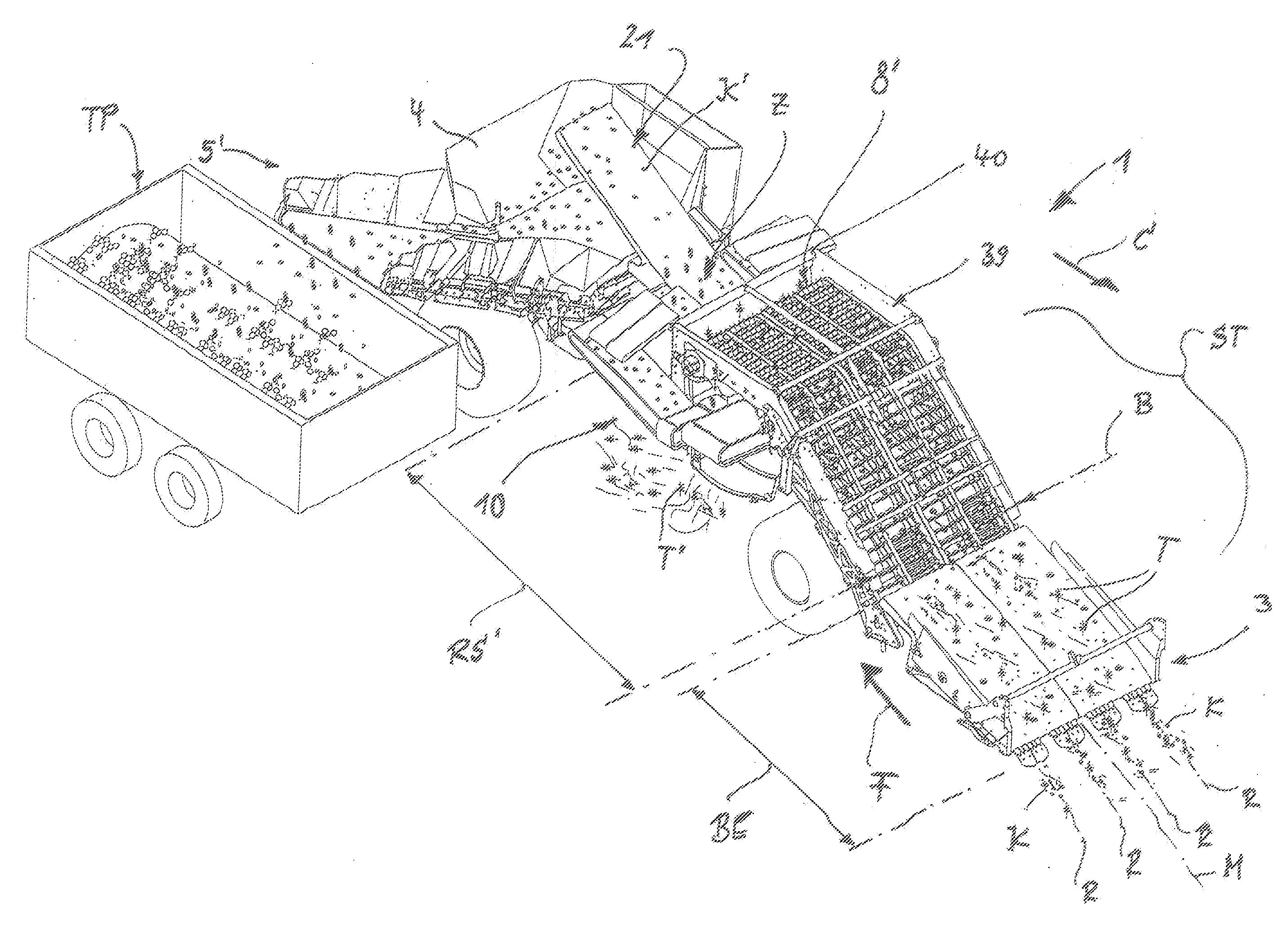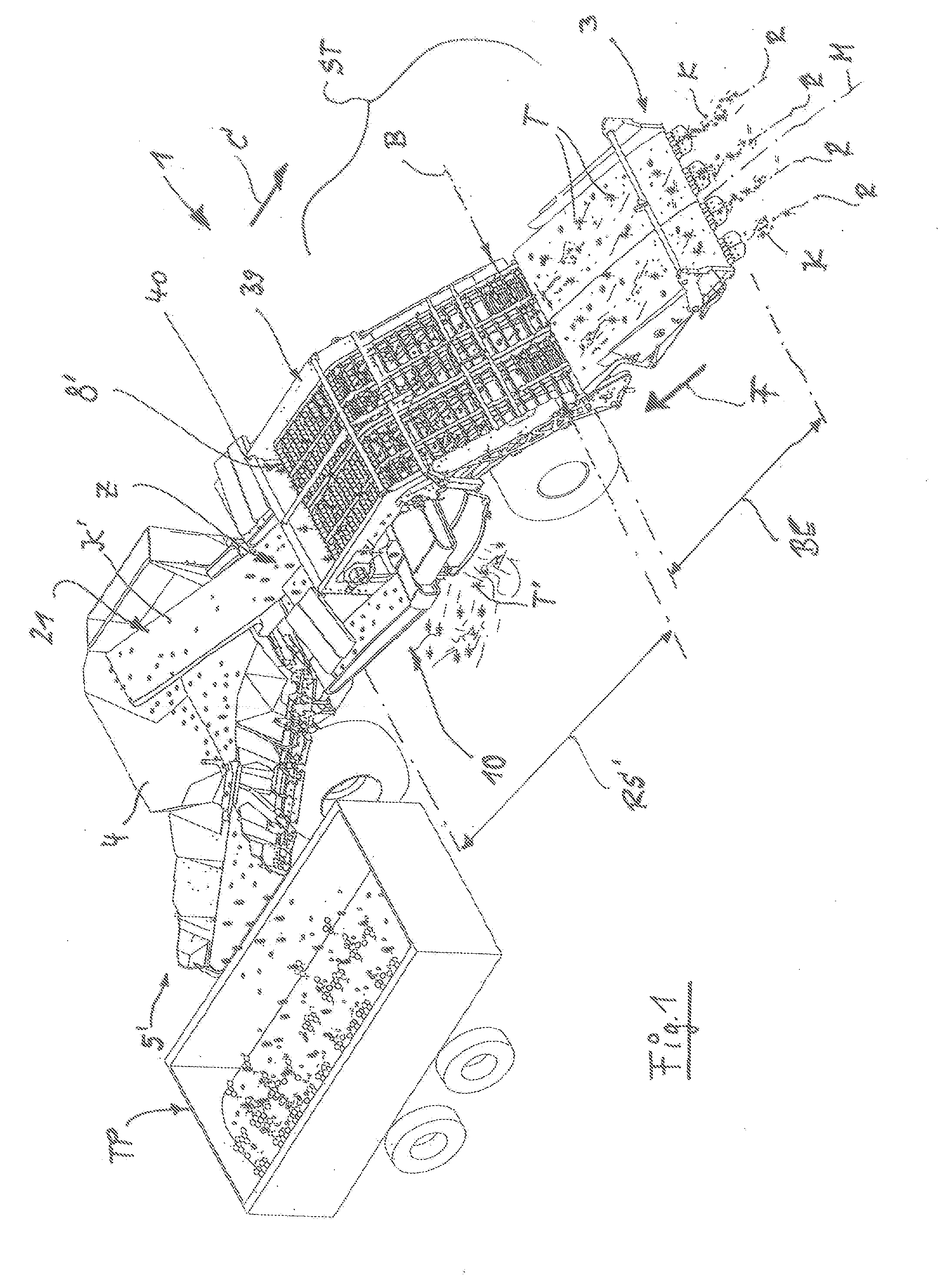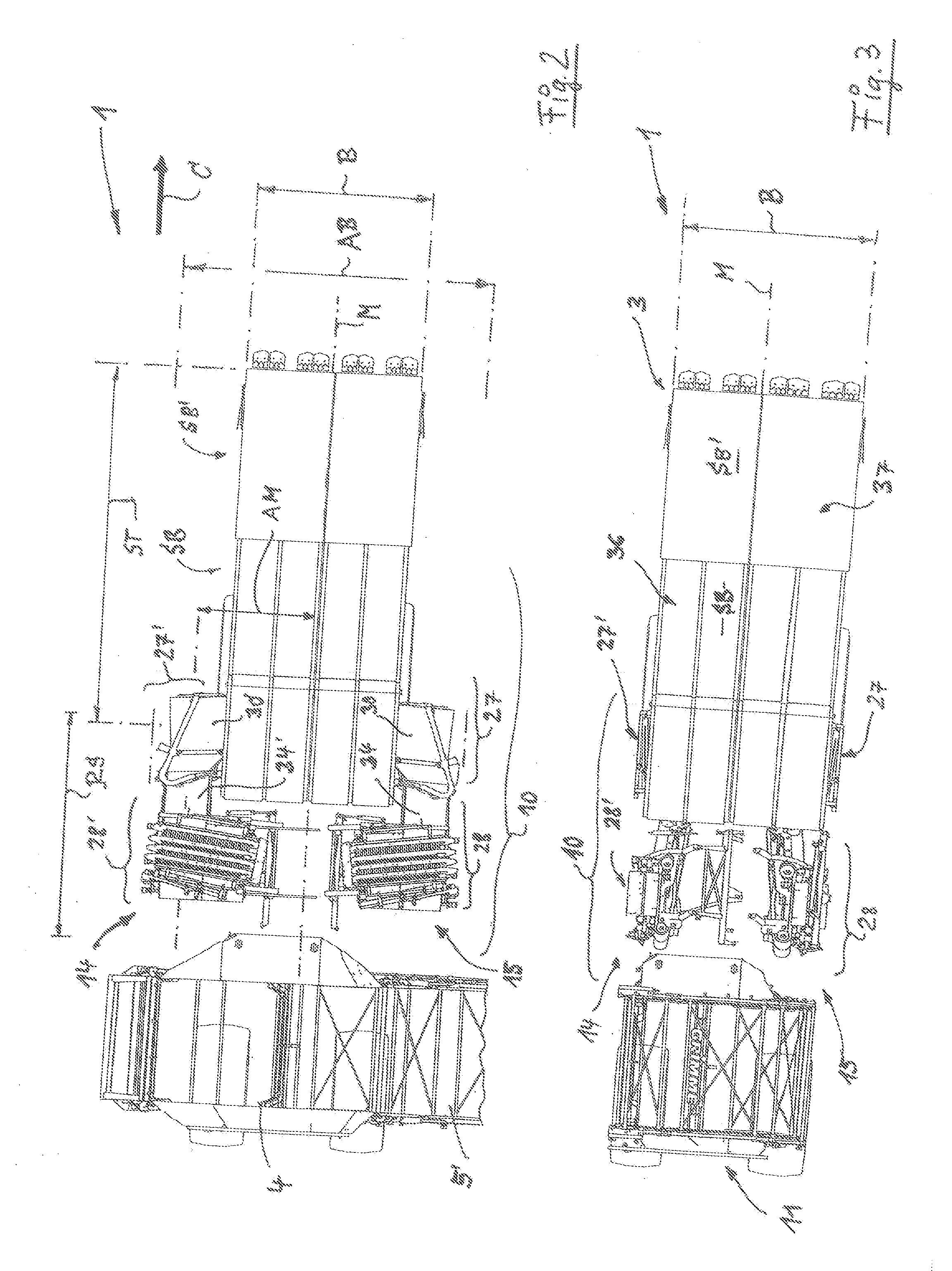Root Crop Harvesting Machine
a harvesting machine and root crop technology, applied in the field of root crop harvesting machines, can solve the problems of crop loss and other problems, and achieve the effect of ensuring the maximum conveying, cleaning, and throughput performance of the system, and minimal expenditur
- Summary
- Abstract
- Description
- Claims
- Application Information
AI Technical Summary
Benefits of technology
Problems solved by technology
Method used
Image
Examples
Embodiment Construction
[0054]In FIG. 1 and FIG. 16 in respective basic illustrations the important components of a root crop harvesting machine 1 are illustrated. In this context, when looking also at FIG. 13 to FIG. 15, a principal action and sorting sequence of this “self-propelled” machine 1 in particular when harvesting root crop K from four rows R or potato ridges is apparent. Conceivable is also that the machine 1 to be described in the following in more detail is embodied in the form of a pull-behind potato harvester or stationary cleaning device so that the drive components, not shown in detail in FIG. 1 or FIG. 16, such as motors, driver's cabin, and / or collecting bunker are not needed.
[0055]Such machines 1 have in the leading area of a machine frame 2 (FIG. 16) a lifting device 3. This lifting device 3 has correlated therewith, in conveying direction F downstream thereof, an ascending first sorting stretch ST that is provided with a substantially unchangeable processing width B (FIG. 1). When lo...
PUM
 Login to View More
Login to View More Abstract
Description
Claims
Application Information
 Login to View More
Login to View More - R&D
- Intellectual Property
- Life Sciences
- Materials
- Tech Scout
- Unparalleled Data Quality
- Higher Quality Content
- 60% Fewer Hallucinations
Browse by: Latest US Patents, China's latest patents, Technical Efficacy Thesaurus, Application Domain, Technology Topic, Popular Technical Reports.
© 2025 PatSnap. All rights reserved.Legal|Privacy policy|Modern Slavery Act Transparency Statement|Sitemap|About US| Contact US: help@patsnap.com



